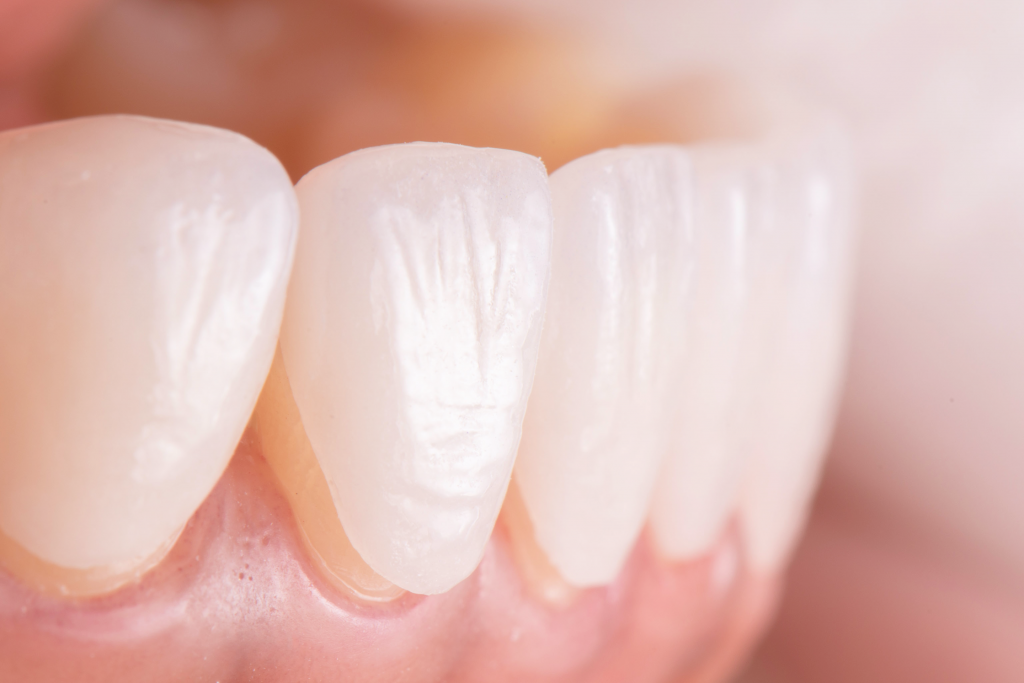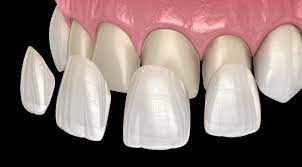Dental veneers (also known as porcelain veneer as well as dental porcelain laminates) comprise wafer-thin, custom-made shells using tooth-colored substances that are used to cover the whole front surfaces of teeth to improve their appearance. Those shells are glued over the tooth and change the color, shape, size, and length of both teeth.
Porcelain and resin structural components can be used to make dental veneers. Porcelain veneers hold up better to staining than resin veneers. These also have a better light-reflective quality than natural teeth. You’ll need to talk to your dentists about the ideal veneer materials for you.

Which Kinds of Issues Can Dental Veneers Help With?

Veneers have frequently been used to correct:
- Tooth stained as a result of root canal therapy, tetracycline or other medication stains, enough fluoride, massive resin fillings, and other factors
- A tooth that has deteriorated
- Scratched or damaged teeth are a major source of embarrassment.
- A tooth that is crooked, uneven, and even have an unusual structure (having craters and bulges in there, for instance)
- A tooth that are spaced apart (to bridge the gap between this two tooth)
Veneers made of porcelain
This porcelain veneer is just a thin covering custom-made to suit over a tooth.
Porcelain veneers have the following advantages:
- These are durable and sturdy.
- Things have an organic appearance.
- In comparison to a crown and cap, fewer teeth enamel must be removed
- They aren’t readily stained.
- For a missing tooth, ceramic veneers are applied.
How do they put Porcelain Veneers into Place:
Your dentist normally removes a very small bit of enamel at the rear and edges of the teeth to condition them.
Our dentist takes an impression, or mold, of the tooth that has been prepped. Our dentist would also choose the appropriate tint of veneer for the teeth.
- This impression is transported to a dental laboratory, where the porcelain veneers are custom-made to match your tooth. This could take a few days. And in the meanwhile, your dentist may provide you with temporary veneers for wear.
- Then the dentist will place the veneers upon that tooth at the following appointment to ensure that they fit and are in good shape. These teeth are being cleaned and indeed the veneers are glued to the tooth after whatever changes have been made.
- Additional adjustments may be introduced at a later time.
Veneers made of resin composite
This tooth-collared fillings material is attached to the teeth to create a resin composites veneer.
Composites resin veneer have the following advantages:
- When compared to crowns with porcelain veneers, lesser tooth enamel is normally removed.
- usually result in fewer dental visits—in certain cases, veneers can be applied in only one visit.
- When they become broken, they are simple to repair; Composite veneers can indeed be mended cheaply and rapidly, even though they are not as durable or wear-resistant as porcelain veneers.
Steps for installing composite resin veneers:

- Following the preparation or reshaping of the teeth, your dentist meticulously bonds as well as sculpts your composite material inside the color of your choice.
- When hardening the composites and adhering them to your tooth, a special light is employed.
- These veneers are typically smoothed as well as polished to match the natural appearance of the teeth.
Bonding
While securely attaching the veneer with your tooth, the dentist would place it on each tooth to inspect its fit and color, removing and cutting it as needed to get the right fit. The color of the veneer could be changed depending on the type of cement used. After that, your mouth will be cleansed, polished, as well as etched in preparation for the veneer. Etching roughens this same surface of the tooth for aid in the joining process. After applying a special paste to the veneer, it is placed over your tooth. Your dentist would flash a special beam of light upon that veneer after it has been properly positioned to trigger chemicals inside the cement, enabling it to harden extremely quickly.
One should obtain veneers while you have them.
- While getting veneers, make sure your mouth and teeth are in good shape. Whenever your veneers are set, your dentist could cure any diseases or decay.
- Individuals who clench and grind dental teeth should avoid veneers because thin veneers can chip and break. When you clench or crush your teeth at night, the dentist may recommend that you wear the plastic dental evening guard.
- Even though our dentist eliminates as little enamel surface as necessary for veneers, again when the enamel has been removed, the procedure cannot be reversed.
- Communicate all of your objectives and treatment alternatives with your dentist, just like you would with any other aspect of your dental care. Dental cleanings appointments are essential for maintaining the health of your teeth as well as your gums.
Getting adjusted after you’ve obtained veneers,
- With strain, veneers could chip or crack. Trying to bite your fingernails as well as chewing on harsh items like pencils and ice should be avoided.
- This could take a couple of days for you to get adjusted to the way your veneers feel. However, should your bite just doesn’t seem right after the veneer has already been installed, tell your dentist. Whenever you leave the building, he or she should repair it.
- Brush as well as floss your tooth and gums every day to keep them healthy. Cavities could still form beneath anywhere around veneers. Check for an American Dental Association’s Seal of Recognition on dental treatment items. This indicates that a device has passed the ADA’s health and efficiency tests.
How Long Do Dental Veneers Last?
Veneers need to be used with care. Eat carefully with back teeth. Especially foods like apple and hard stuff like nuts and chips. However, they may last anywhere from 5 to 10 years. These veneers might need to be changed after this period.
Aftercare for Dental Veneers
Dental veneers don’t necessitate any additional attention. Brushing, brushing, and washing with an antimicrobial mouthwash are all proper oral hygiene routines to maintain.
Despite the fact these porcelain veneers are stain-resistant, your dentist may advise you to prevent stain-causing foods and drinks (for example, coffee, tea, or red wine).
How much does a dental veneer price?
Usually, the cost of veneer varies depending on where you live out in the country as well as how much treatment you want to be performed. The cost per tooth is from INR 5000 to 10000 on average. Insurance frequently does not pay the expense. Check using your dental insurance provider to be certain.
Conclusion
Getting a dental veneer done is more of an esthetic driven decision than function driven. It may improve your looks amazingly, but it comes with a set of instructions that you need to follow. Hope this helps. If you have any other queries you can email me.
